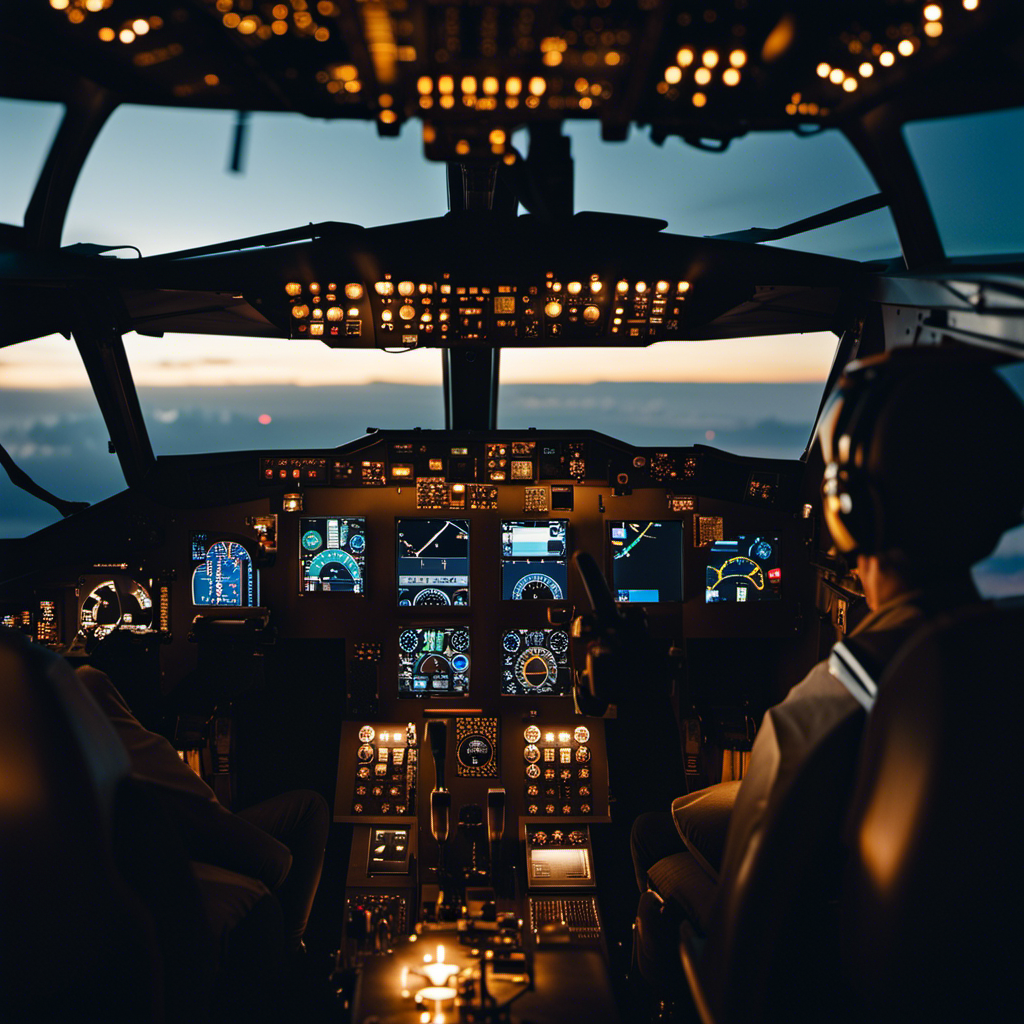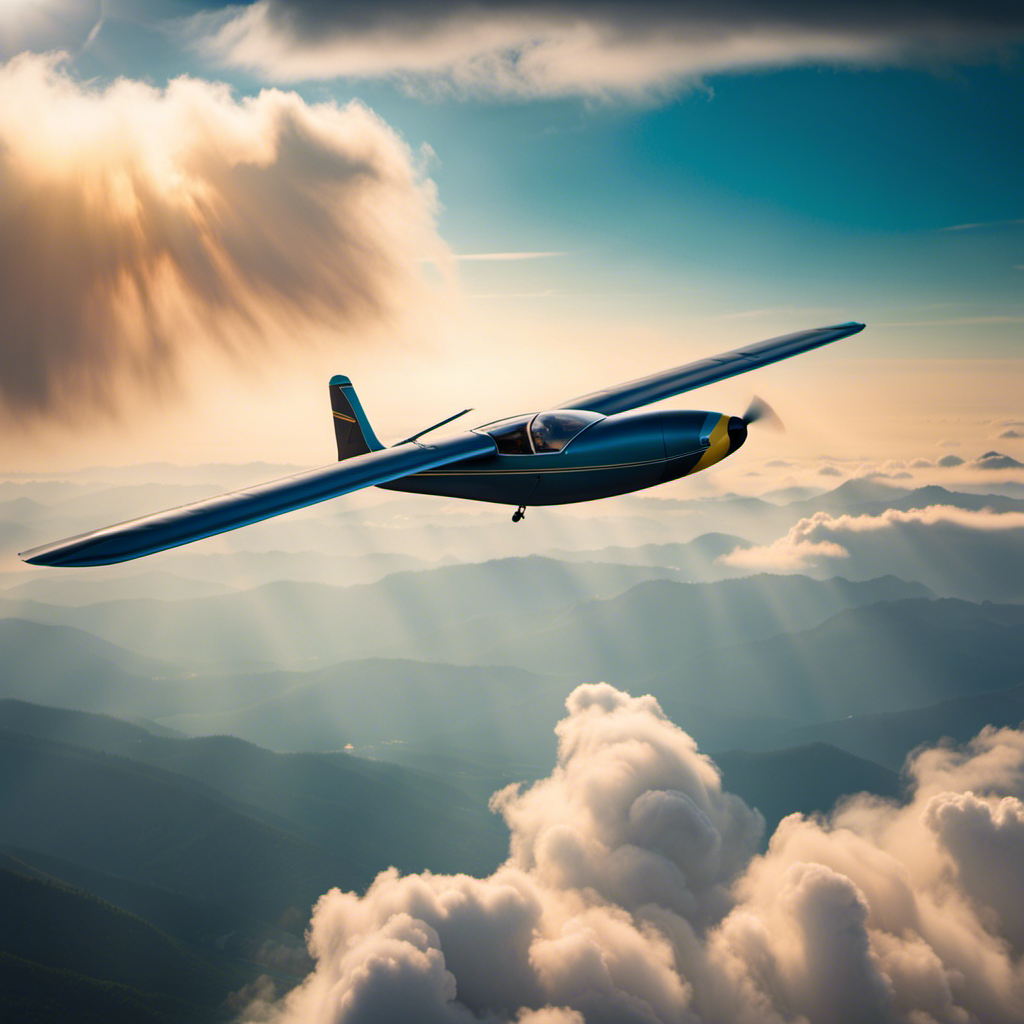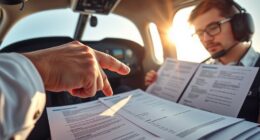You may be wondering if pilots actually fall asleep in the cockpit. Surprisingly, it is not as uncommon as you may think. Ensuring that pilots are well-rested and alert is crucial for the safety of the flight.
In this article, we will explore the regulations and guidelines surrounding in-flight napping, the benefits of power naps for pilots, and the role of crew resource management in maintaining safety.
So, let’s debunk the myths and dive into the fascinating world of pilot rest and sleep in aviation.
Key Takeaways
- Pilots do not typically nap in the cockpit during flights.
- Rest breaks are not for napping but for brief periods of rest.
- Long duty hours and irregular sleep schedules can cause fatigue, impairing cognitive function and decision-making abilities.
- Strict regulations, strategies, and advancements in technology are implemented to manage pilot fatigue and prioritize pilot well-being for flight safety.
The Importance of Pilot Rest and Alertness
You need to understand the importance of pilot rest and staying alert in the cockpit. Pilot fatigue management is crucial to ensure the safety of both the crew and passengers.
Sleep deprivation effects can significantly impair a pilot’s cognitive abilities, reaction time, and decision-making skills. Studies have shown that sleep-deprived pilots are more prone to errors and accidents. Therefore, it is essential for pilots to prioritize rest and take necessary steps to prevent fatigue.
This includes getting enough sleep before flights, following regulations and guidelines for duty and rest periods, and practicing good sleep hygiene. By doing so, pilots can maintain optimal alertness levels and reduce the risk of fatigue-related incidents.
Now, let’s explore the regulations and guidelines for in-flight napping.
The Regulations and Guidelines for In-Flight Napping
The regulations and guidelines permit in-flight napping for pilots. This practice is implemented to ensure the safety and well-being of both pilots and passengers. Here are some key points to understand about the regulations and guidelines surrounding in-flight napping:
-
Duration: Regulations typically allow for short naps, ranging from 20 to 30 minutes, to prevent pilots from entering deep sleep stages that could impair their performance upon waking.
-
Timing: Napping is usually permitted during specific phases of flight, such as cruise, when workload is lower and the risk of interference is minimal.
-
Safety Measures: Pilots must adhere to certain safety protocols, such as notifying the co-pilot before napping and using seat belts or harnesses to prevent injuries during turbulence.
Understanding the Physiology of Sleep and Fatigue
Understanding the physiology of sleep and fatigue is crucial for comprehending how it affects pilot performance. Sleep deprivation and disrupted circadian rhythms can have significant impacts on a pilot’s ability to function effectively. When we don’t get enough sleep, our cognitive abilities, reaction times, and decision-making skills are impaired. Fatigue can also lead to decreased situational awareness and increased errors. To better understand the effects of sleep deprivation and fatigue on pilots, let’s take a look at the following table:
| Effects of Sleep Deprivation and Fatigue on Pilots |
|---|
| Decreased cognitive abilities |
| Impaired reaction times |
| Reduced decision-making skills |
| Decreased situational awareness |
As we can see, sleep deprivation and fatigue can have detrimental effects on pilot performance. However, there are ways to mitigate these effects, such as taking short power naps. These naps can provide several benefits for pilots, which we will explore in the next section.
The Benefits of Short Power Naps for Pilots
Taking short power naps can significantly improve a pilot’s cognitive abilities and reaction times. Napping has several benefits for pilots, highlighting the importance of incorporating this practice into their routine:
- Enhanced alertness: A brief nap can help combat fatigue and increase overall alertness during critical phases of flight.
- Improved decision-making: Napping allows pilots to recharge their mental capabilities, leading to better judgment and decision-making skills.
- Increased vigilance: By reducing drowsiness, power naps help pilots stay vigilant and focused on their tasks, minimizing the risk of errors.
- Enhanced problem-solving: Napping provides a mental reset, allowing pilots to approach complex situations with a fresh perspective and find effective solutions.
These benefits emphasize the significance of short power naps in ensuring optimal performance and safety in the cockpit. By prioritizing rest and rejuvenation, pilots can mitigate the effects of fatigue and maintain their cognitive abilities.
Moving forward, it is essential to explore the role of crew resource management in ensuring safety.
The Role of Crew Resource Management in Ensuring Safety
Incorporating crew resource management practices is crucial for ensuring the safety of flight operations. Crew coordination plays a vital role in maintaining effective communication and decision-making within the cockpit. By working together as a team, pilots can effectively manage the challenges they may encounter during a flight.
Psychological factors also come into play, as pilots must be aware of their own mental states and those of their crew members. Stress, fatigue, and distractions can all impact performance, so it is important for pilots to recognize and manage these factors.
As we delve into how airlines implement rest and sleep programs for pilots, it becomes evident that addressing crew resource management is just one aspect of ensuring the overall safety and well-being of flight operations.
How Airlines Implement Rest and Sleep Programs for Pilots
Airlines often implement rest and sleep programs to ensure pilots are well-rested and able to perform their duties effectively. These programs are an essential part of airline policies and pilot training, prioritizing the safety of both the crew and passengers.
Here are some key elements of these programs:
- Scheduled rest periods: Airlines establish specific time frames for pilots to rest and recharge during long flights.
- Controlled work hours: To prevent fatigue, airlines limit the number of hours pilots can work without a break.
- Mandatory sleep breaks: Pilots are required to take short naps during certain flights to maintain alertness.
- Fatigue reporting systems: Airlines have mechanisms in place for pilots to report any fatigue-related concerns, ensuring proactive management of pilot well-being.
The Latest Technological Advances in Monitoring Pilot Alertness
With the latest technological advances in monitoring pilot alertness, you can now benefit from improved safety measures and enhanced performance. Airlines have started implementing various monitoring devices to track and analyze pilot fatigue levels during flights. These devices, based on sleep deprivation studies, provide valuable insights into pilot’s sleep patterns and help in identifying potential risks.
| Monitoring Device | Purpose | Benefits |
|---|---|---|
| Actigraphy watches | Monitor sleep-wake patterns | Assess pilot’s sleep quality |
| EEG headbands | Measure brain activity | Detect signs of drowsiness |
| Eye-tracking glasses | Track eye movements | Identify signs of fatigue |
Debunking Common Myths About Cockpit Napping
Now, let’s clarify some misconceptions about taking rest breaks in the cockpit and shed light on the realities of these breaks.
Contrary to popular belief, pilots do not typically nap in the cockpit during flights. Instead, they are required to adhere to strict regulations regarding fatigue management to ensure the safety of the flight. Here are a few key points to debunk the myth of cockpit napping:
- Pilots are trained to manage their sleep schedules effectively to minimize the risk of fatigue.
- Rest breaks are strategically planned during long flights to provide pilots with an opportunity for brief periods of rest.
- During these breaks, pilots are often required to perform tasks such as monitoring instruments or communicating with air traffic control.
By implementing these measures, pilot fatigue management aims to combat sleep deprivation and promote alertness in the cockpit.
Understanding the realities of rest breaks helps to debunk the misconception of pilots napping on the job. However, it is crucial to recognize the impact of pilot fatigue on flight safety.
The Impact of Pilot Fatigue on Flight Safety
To ensure the safety of your flight, it’s important to understand the impact of pilot fatigue on flight safety.
Pilots are susceptible to fatigue due to long duty hours, irregular sleep schedules, and the demanding nature of their job. Lack of sleep can impair cognitive function, reaction time, and decision-making abilities, posing significant risks to both the crew and passengers.
In order to prevent pilot fatigue, airlines have implemented various strategies such as regulated duty times, mandatory rest periods, and fatigue risk management programs. These measures aim to prioritize pilot well-being and ensure they are adequately rested before taking command of an aircraft.
The Future of Pilot Rest and Sleep in Aviation
The future of pilot rest and sleep in aviation looks promising as airlines continue to prioritize the well-being and safety of their crew and passengers.
With advancements in technology, new solutions are being developed to enhance pilot well-being and ensure they are well-rested during flights. One such innovation is the implementation of smart wearable devices that monitor pilot fatigue levels and provide real-time feedback. These devices can track vital signs, sleep patterns, and alertness levels, allowing pilots to take necessary breaks and rest when needed.
Additionally, aircraft manufacturers are investing in designing more comfortable crew rest areas with improved sleeping facilities. These advancements in future technologies not only prioritize pilot well-being but also contribute to overall flight safety, ensuring that pilots are alert and fully capable of making critical decisions during their flights.
Frequently Asked Questions
How long are pilots allowed to nap during a flight?
Pilots are typically allowed to take power naps during long flights to combat fatigue. These short naps, lasting around 20-30 minutes, can be effective in boosting alertness. However, pilots are not allowed to nap during takeoff or landing for safety reasons.
Do pilots have designated sleeping quarters on long-haul flights?
On long-haul flights, pilots have designated sleeping quarters where they can rest. These quarters are equipped with beds and amenities to ensure pilots meet their rest requirements and stay alert during the flight.
Are there any restrictions on when pilots can take naps during a flight?
There are no specific restrictions on when pilots can take naps during a flight. However, pilots’ sleep patterns are regulated to prevent fatigue and ensure safety. Fatigue can have a significant impact on pilots’ performance.
What measures are in place to ensure that pilots are fully alert after waking up from a nap?
To ensure pilot alertness after a nap in the cockpit, various measures are in place. These include strict rest regulations, post-nap assessments, and the use of stimulants like coffee or energy drinks when necessary.
Are there any studies or research that support the effectiveness of cockpit napping in improving pilot alertness?
Studies have shown that cockpit napping is effective in improving pilot alertness. Several pilot alertness studies have supported the effectiveness of this practice, ensuring that pilots are well-rested and able to perform their duties safely.
Conclusion
In conclusion, the issue of pilots napping in the cockpit is a complex one. While regulations and guidelines exist to ensure pilot rest and alertness, there is still debate surrounding the effectiveness of in-flight napping.
The physiology of sleep and fatigue plays a significant role in pilot performance, highlighting the benefits of short power naps. However, the impact of pilot fatigue on flight safety cannot be ignored.
As technology advances, monitoring pilot alertness becomes crucial. Ultimately, the future of pilot rest and sleep in aviation will continue to evolve as we strive for safer skies.









